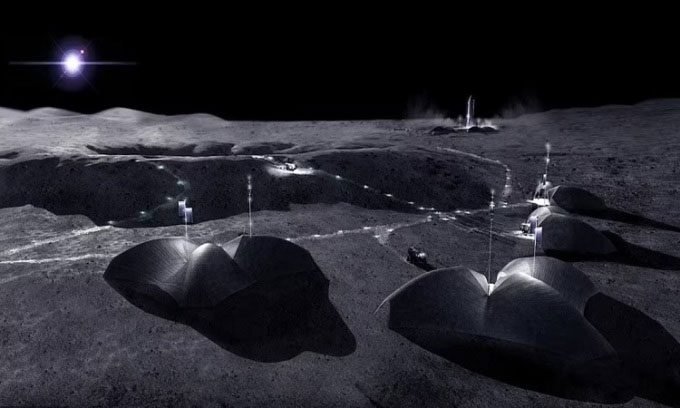AI SpaceFactory Designs 3D-Printed Lunar Bunker to Protect Astronauts from Radiation, Meteorites, and Earthquakes.
The base designed by AI SpaceFactory will feature a Roman-style dome covered with over 2.5 meters of lunar soil, along with three independent clusters surrounding a common area. Each cluster will have an area of 75m2, while the central area will be 90m2. The exterior design will also integrate photovoltaic plants to harness solar energy.

3D-printed bunker named LINA. (Photo: AI SpaceFactory)
In the coming decade, NASA’s Artemis mission will send astronauts to the lunar south pole, an area that receives near-constant sunlight. The LINA (Lunar Infrastructure Asset) base will be constructed by autonomous robots near the Shackleton crater. This location allows for continuous sunlight, enabling the use of solar energy. Additionally, the shadow of the crater walls facilitates the collection of water ice.
According to the design team, with a lifespan of at least 50 years, LINA can accommodate pressurized crewed rovers, space exploration vehicles, telecommunications equipment, and living modules. The lunar bunker will be covered by a layer of lunar soil, providing maximum protection against solar and cosmic radiation, micrometeorites, seismic activity such as earthquakes, and extreme thermal fluctuations. The design of LINA is the result of collaboration between AI SpaceFactory and NASA to advance construction technology on the lunar surface within the timeline of the Artemis program.
To build the base, AI SpaceFactory is developing a 3D printing system capable of operating in a vacuum environment with temperatures ranging from -170 to 70 degrees Celsius. The first prototype is currently being tested at the Kennedy Space Center in a simulated environment chamber replicating conditions at the lunar south pole. AI SpaceFactory hopes the construction will support long-term habitation and travel to multiple other planets.
Following the uncrewed Artemis 1 mission that orbited the Moon, the Artemis 2 mission is scheduled to launch in May 2024, flying to the Moon without landing. Subsequently, Artemis 3 aims to land on the lunar surface as early as 2025. This will be the first crewed mission to the Moon in over 50 years, following the Apollo 17 mission in December 1972.




















































